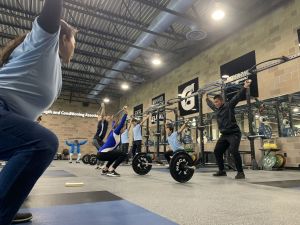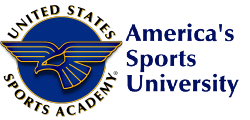International Certification in Sports Strength and Conditioning
It’s no surprise the best strength coaches are key components of the coaching team these days – not just in Olympic, college and professional sports but also personal coaches – from cradle to grave. Strength and conditioning is the future of maximizing sport performance.
 The Sports Strength and Conditioning Certification (SSCC) program includes 10 courses designed to teach the fundamental principles of strength training, conditioning and nutrition for sports and exercise. The courses are intended to give strength coaches a solid knowledge of the physiological systems challenged by sports conditioning, strength and power training which can be used to enhance individual and team performance in sports competition. The program is designed to empower the coach to reach their ultimate goal – to enable athletes to achieve their maximum performance and competitive potential while mitigating the risk of injury.
The Sports Strength and Conditioning Certification (SSCC) program includes 10 courses designed to teach the fundamental principles of strength training, conditioning and nutrition for sports and exercise. The courses are intended to give strength coaches a solid knowledge of the physiological systems challenged by sports conditioning, strength and power training which can be used to enhance individual and team performance in sports competition. The program is designed to empower the coach to reach their ultimate goal – to enable athletes to achieve their maximum performance and competitive potential while mitigating the risk of injury.
This program explores both the basic and advanced tenets for developing strength and power for a given sport. We start with the traditional training principles of progressive stress overload-recovery (bigger, faster, stronger while avoiding overuse injuries and overtraining), individuality by creating the athletic profile – physiologic, metabolic, biomechanical – as there is strength in numbers and monitoring changes over time; specificity of training for a given sport, and the application of sport specific training principles such as: kinetic link-summation of forces, plyometrics, stretch-shortening cycle, complex training and post-activation potentiation.
Specialized Program of Study
Goals of the Program
Upon successful completion of this SSCC series, you should be able to:
- Apply kinesiological and physiological principles of the cardiopulmonary, neuromuscular, and neuroendocrine systems and explain their responses, and adaptations to acute and chronic exercise
- Apply biomechanical principles involved in various sports and resistance training programs
- Understand metabolic specificity and the processes of bioenergetics responsible for producing the energy necessary for sports conditioning
- Employ nutritional principles that are important in sports conditioning
- Employ principles and techniques used in weight loss and weight gain programs
- List various ergogenic aids that are commonly used in sports conditioning
- Explain the role of strength, endurance, balance, agility, speed, power and flexibility in sports conditioning and performance
- Use principles of designing sports conditioning programs based on testing and evaluation, acute programming variables, needs analysis, and the principles of periodization
- Apply the principles for the organization and administration of the strength and conditioning facility, including facility layout, operations, and emergency procedures

